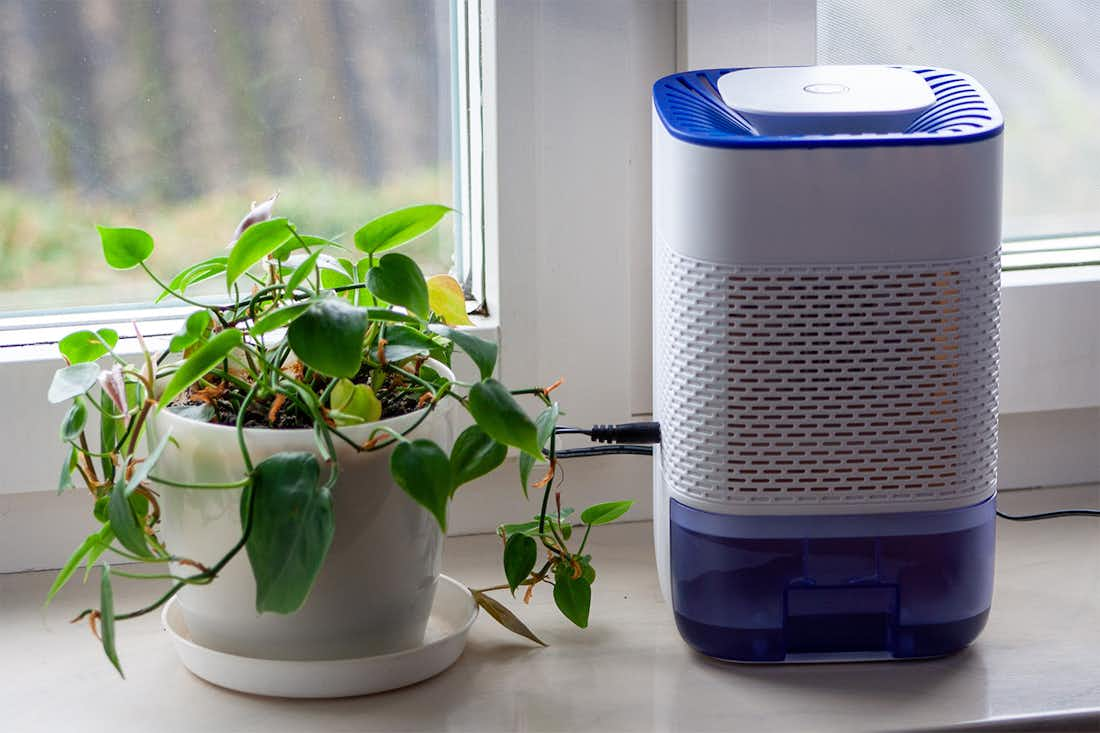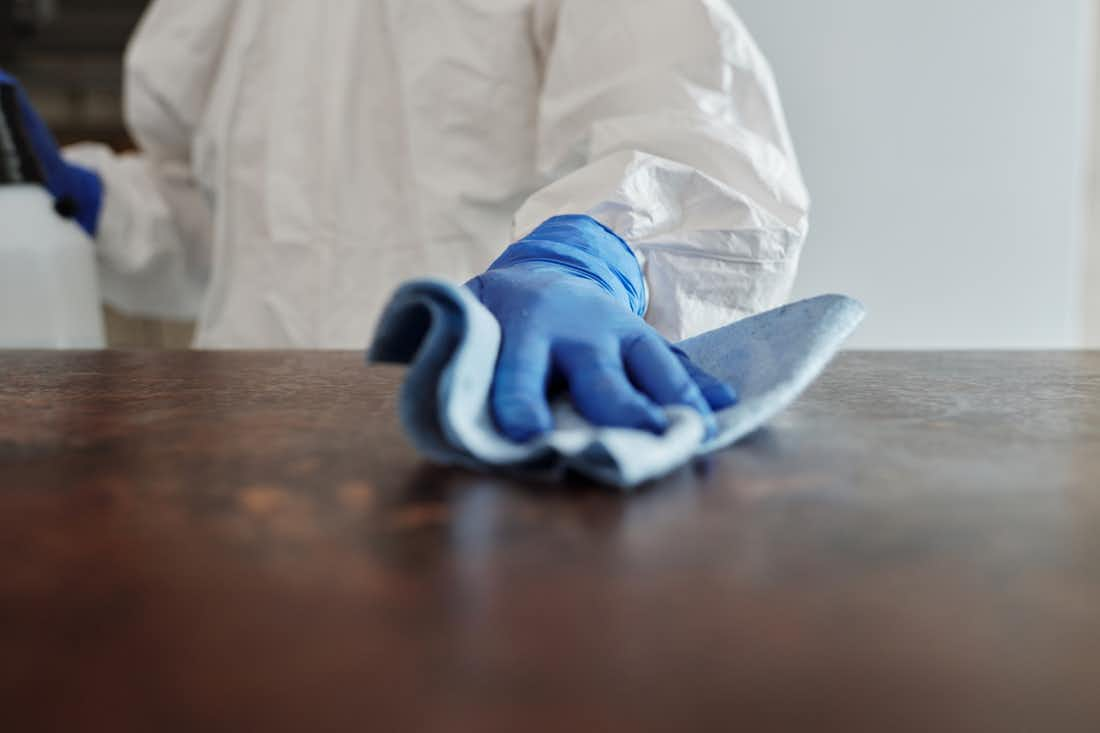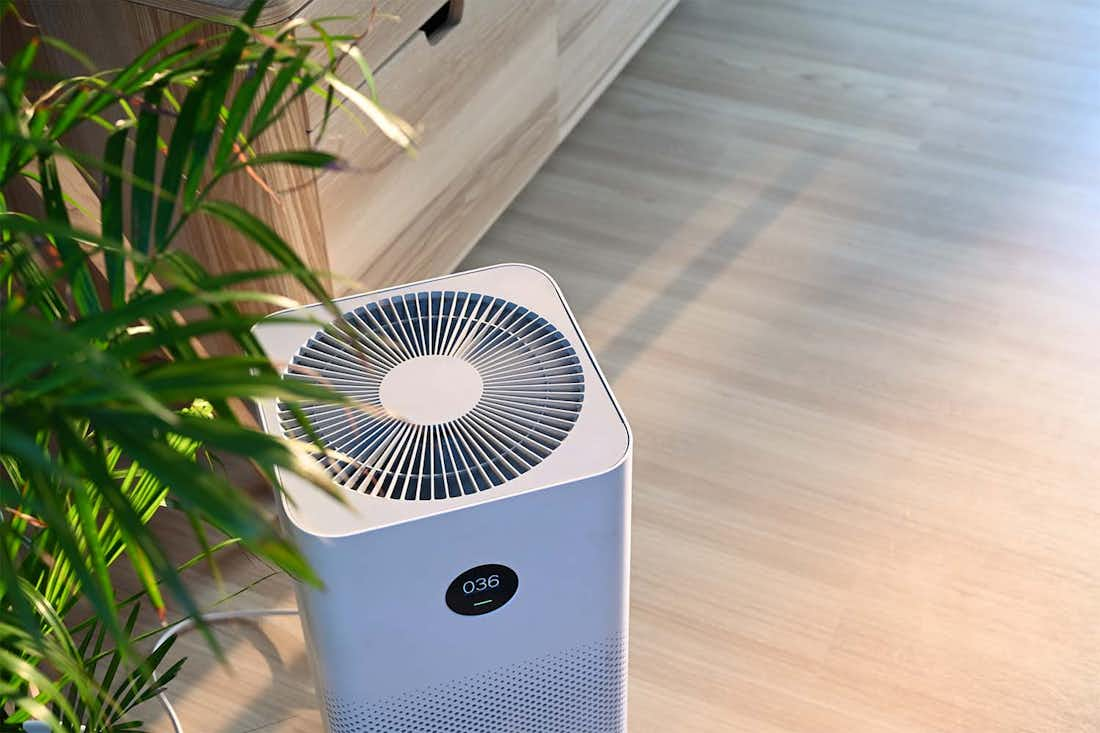May 27, 2022
Is Black Mold Deadly?
6 minute read
Hearing the term “black mold” probably ignites a flame within you that makes you want to cower in fear. Black mold is often thought to be linked to illness and health concerns, and it can be tough to tell the difference between fact and fiction.
If you see black mold, is it time to call in the hazmat crew to prevent serious health problems? Or have we all been quick to jump to conclusions about black mold poisoning?
Let’s learn once and for all if having black mold is actually dangerous, as well as how you can get rid of a mold problem safely.
What Is Black Mold?
The mold you see on a piece of bread or those week-old broccoli sprouts is a bit different from black mold. However, they do share some major similarities.
Mold is one of the most common living things on planet Earth, and it’s a type of fungi.
Molds thrive in warm, damp, and dark environments like bathrooms, basements, garages, crawlspaces, or attics. In most cases, mold is entirely harmless to your health. The only reason that you start to sneeze or wheeze around it is because of an allergic reaction.
Black mold refers to any species of mold that takes on a dark color that makes it appear black. A common dark-colored species is stachybotrys chartarum. However, it has a bit of a bad rap for being super dangerous and possibly deadly, when in reality, it’s no different from any other type of mold.
So Why Do People Think It’s So Deadly?
The reason that people think black mold is so dangerous stems back to a case in 1993. Eight infants in Cleveland, Ohio, had become ill with an infection of the lungs that consisted of bleeding – a condition known as idiopathic pulmonary hemorrhage. One of these infants lost their life.
When the CDC performed an investigation, they found that these infants were living in homes with significant water damage and increased levels of toxin-producing mold on the inside. This spurred a thought process that black mold was toxic and deadly.
However, scientists have never been able to definitively link black mold exposure to illness and death, even in the Cleveland infants.
What Are the Symptoms of Black Mold Exposure?
The harsh reality is that every single type of mold is _technically _toxic in that they produce toxins. However, mold exposure is very rarely deadly. People are exposed to mold spores when they are released and become airborne, making it easy for them to travel throughout homes or indoor areas.
Some people are more sensitive to mold exposure than others. Individuals with compromised immune systems, asthma, lung diseases, or a specific mold allergy are usually more severely affected by moldy homes.
Symptoms of mold exposure can include:
- Sneezing
- Coughing
- Runny nose
- Watery or itchy eyes
- Congestion
- Trouble breathing
- Itchy nose, throat, or eyes
- Headache
Individuals that are highly sensitive to mold exposure may also develop health effects like respiratory infections when exposed. These affect the sinuses, airways, and throat, and typically go away once these individuals remove the mold that is causing the symptoms.
In rare cases, a severe allergic reaction to mold called anaphylaxis can occur. Anaphylaxis is a severe immune response in which the body goes into shock. The body releases a flood of chemicals that can cause a blood pressure drop, a rapid and weak pulse, or narrowed airways. If you experience any of these symptoms, contact medical assistance immediately.
What Causes Black Mold Allergies?
Your immune system is your body’s shield that protects you from foreign invaders like colds, flu, and other health issues. This is all great, but sometimes it mistakenly perceives harmless substances like mold as harmful.
When this happens, it can elicit an allergic reaction.
Immunoglobulin E, or IgE, are antibodies produced by the immune system. If you have a black mold allergy, your immune system overreacts to mold spores and produces an excess amount of these antibodies. IgE then spurs the release of a chemical called histamine, which is the primary source behind the symptoms you associate with a reaction.
Most of the time, symptoms of mold allergies are mild. However, black mold can theoretically be life-threatening and deadly if your reactions are severe enough to the point where you experience symptoms of anaphylaxis.
How Are Black Mold Allergies Treated?
An allergic reaction is the most common cause of symptoms associated with black mold. The good news is that there are plenty of different methods you can take to treat the symptoms.
One of the most common is antihistamines. These are medications that block the effects of histamines (the symptom-causing chemical), so you start to feel more comfortable overall.
These are typically taken by mouth. However, you can take nasal sprays or eye drops for targeted relief, depending on where your symptoms are worst.
However, you might also be able to benefit from allergy immunotherapy or AIT. AIT is a revolutionary remedy that treats allergies from the source. Rather than just treating the symptoms, this can help you build up a tolerance to your trigger from the inside out.
AIT works by gradually exposing your immune system to your suspected allergen over an extended period of time to allow it to build up a tolerance. It’s sort of like running .1 miles every day until you’re eventually running a marathon.
To see if this life-changing prescription treatment is right for you, take your free allergy consultation through Cleared.
However, you don’t necessarily need medications to find relief. You can also alleviate your symptoms with a slew of home remedies like neti pots for congestion or cold compresses over your eyes to ease itchiness and discomfort.
How Can You Prevent Black Mold?
Preventing toxic black mold is arguably the best way to treat it, and there are some simple steps you can take to make sure your home remains a mold-free place.
Remember that mold thrives in damp, dark, and warm places. This makes locations like your basement or bathroom super easy places for it to thrive due to the higher humidity levels. You’ll want to take some extra time to fortify them against mold growth.
One of the easiest ways to fight against mold growth is by reducing the humidity in your home, which brings down moisture levels and improves air quality. Dehumidifiers pull moisture from the air and displace it into a separate reservoir. This can cut back on mold and also make your home more comfortable to be in overall. Humidity in your home should fall between 30-50%.
You can also cut back on humidity by making sure air is circulating through your home. You can do this by running your air conditioning or keeping windows open more often. Just be cautious of the latter option, as opening your windows can make you susceptible to seasonal pollen allergies as well.
Finally, be sure to keep areas of your home nice and dry. Wipe down sinks and showers with a clean towel often to prevent moisture from building up and fostering mold growth.
How Can You Get Rid of Black Mold?
If you do see some visible mold or mildew growing someplace in your house, you don’t need to panic. Mold removal isn’t as daunting or dangerous as you may have always thought.
You can typically clean up small amounts of mold with a mold-removing spray that you can buy at any hardware or home improvement store. However, you can also make your own by combining a cup of bleach with a gallon of water.
Spray the solution on the surface and gently scrub with a clean sponge. It might be a good idea to wear a facial covering while you do this just to prevent any mold spores from getting into your mouth and eliciting an allergic reaction.
After you apply the solution, don’t rinse it. Instead, apply a solution of one-part ammonia to one-part water. Spray it on the mold and let it sit for about two to three hours. Then, rinse it with water and dry it with a clean towel.
If you have a lot of mold in an area of your home that doesn’t seem to respond to bleach solutions, you’ll want to hire a professional. If you rent your space, let your landlord know. Most professionals can identify the extent of mold growth and figure out the best way to remove it without harming the structure of your living space.
How Do I Know If I’m Allergic to Mold?
If you’re sneezing and wheezing inside your home and you find some mold spores in your basement, there’s a good chance that you just discovered the culprit behind your symptoms.
However, allergy symptoms can be caused by all sorts of things, like pollen and dust mites, so how do you know what’s actually causing the problem?
One of the best ways to do this is by taking an allergy test, such as a skin prick test or a blood test for allergies. An allergy skin test works by gently pricking your skin and placing droplets containing suspected allergens on the testing surface. If your skin shows a tiny raised bump called a wheal, you’re likely allergic to the substance in question. But if no reaction appears, there’s a good chance that the real culprit is something else entirely.
Allergy blood tests are another effective testing method that tests your blood for specific IgE antibodies. If you have a high amount of antibodies for mold, that’s probably the reason for your reaction.
Skin prick tests require you to take a trip to the allergist’s office, but with Cleared, you can use our At-Home Testing Kit to do a blood test right from the comfort of home. It tests for 40 common environmental allergens, so you don’t need to do any more guesswork in regards to what’s making your nose run and your eyes water.
You can also consult with your allergist if you have any doubts, as they can use a combination of testing as well as other diagnostic tools to paint a clearer picture of why you’re experiencing your symptoms. Take your free allergy quiz today and get matched with a licensed allergist to start your personalized consultation.
In Conclusion
Black mold has long been feared because of its potential toxicity and deadliness. But the reality is that this is an incorrect belief that stemmed from a single 1990s case involving infants. Since then, the CDC and other research centers have found no direct link between black mold and health hazards.
With that said, many people are allergic to mold, and this can spur symptoms like congestion, cough, runny nose, and watery eyes. In some severe cases, people may experience severe reactions known as anaphylaxis, which can be deadly.
You can treat mild symptoms of mold allergies by taking antihistamines, and you might be able to prevent onset ever again by getting immunotherapy treatment. Not to mention, you can prevent mold from growing in your home by keeping humidity between 30-50% and being sure to dry surfaces that become wet.
If an allergy to mold is starting to get old, your online allergist is ready to help. Get personalized treatment from home, with free ongoing care from US-licensed allergists and nurses with Cleared.
Sources:
Update: Pulmonary Hemorrhage/Hemosiderosis Among Infants --- Cleveland, Ohio, 1993-1996 | CDC
Respiratory tract infections (RTIs) | NHS.
Related Articles
Healthy habits start here
Sign up to receive exclusive offers and ongoing advice



